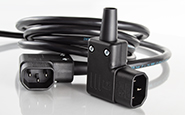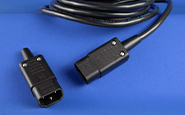Why Observe International Product Safety Requirements?
In addition to making an electronic product more attractive from a marketing point of view, knowledge of and conformity with various national and international product safety regulations are legal requirements for doing business in many industrialized countries. There are five basic reasons why electrical or electronic equipment manufacturers should be familiar with and observe international product safety regulations when designing equipment:
Five Reasons to be Familiar with and Observe International Product Safety Regulations
- In some countries (such as Canada), laws require that all electrically powered products be evaluated by an appointed authority before connection to the mains. In Canada, it can be the provincial Hydro Power authority, CSA (Canadian Standards Association). It is a common occurrence for the local Hydro Inspector to “pull the plug” on uncertified equipment. This could be very costly to the exporter. In the United States, it is now OSHA-mandated federal law that all electrically powered equipment in the workplace be “Listed” by a nationally recognized test laboratory (“NRLT”).
- Some kinds of equipment (primarily devices intended for use in the home) cannot be sold in Sweden or Switzerland, for example, without being tested and approved by SEMKO and SEV respectively. This restriction applies in varying degrees to other markets as well.
- Other kinds of equipment, although not subject to mandatory testing by the safety agencies, may fall under the control of workplace safety inspectors (similar to OSHA in the United States) who have the authority to prohibit the use of equipment that they deem unsafe. For example, equipment protected by uncertified Fuse Holders or equipped with uncertified power supply cords and cordsets may be subject, to mandatory disconnection if discovered by the workplace safety agency.
- In some countries, electrical and electronic products are not subject to mandatory testing or inspection prior to sale; however, the seller and manufacturer assume significant amounts of product liability exposure in the event of a product failure in which someone is injured or there is a loss of property due to fire. Although it is correct that product liability exposure is generally not as severe in foreign countries as it is in the United States and Canada, this situation is rapidly changing. In some respects, electrical device manufacturers actually have greater exposure in some foreign markets than they do in North America (see Product Liability in Europe below).
- Other very good reasons for compliance to international regulations include: enhanced quality and reliability of the product, meeting your competition head on and, lastly, peace of mind in knowing that you sell a product that is not only safe but one that conforms to international expectations for safety.
In short, the North American electrical/electronic equipment manufacturer can enhance the export sales potential of a product by assuring that it meets the needs of the client as well as the country’s product safety requirements. However, this does not mean that all exporters must plan to submit all equipment for testing in the countries in which they will do business.
Once the decision has been made that a product will be sold in a worldwide market and, that it will conform to all applicable national product safety standards in the markets in which it is sold, one of the following design approaches is usually selected.
Product Liability in Europe
Europe has had a uniform product liability law since 1988.
The legislation provides for strict liability on the part of manufacturers and their European distributors: if someone is injured or killed while using a product, the manufacturer or distributor is presumed to be guilty of making or selling a defective product. User negligence is no longer a defense; a trial is used only to determine the extent of the manufacturer’s liability.






